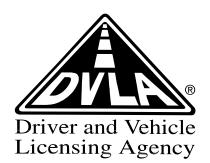New Style UK Driving Licence Security Features
8 Apr 2012 | No Comments | posted by admin | in Blog
Please download the attached guide from the DVLA which shows the 10 security features of the new UK driving licence.
What is a Skid?
20 Mar 2012 | No Comments | posted by admin | in Blog
A vehicle tyre loses grip when forces acting on the vehicle exceed the coefficient of friction between the tyre and the road surface. Many things can cause this, such as excessive speed for the road conditions, sudden braking, fierce acceleration and harsh or excessive steering. A car’s condition can also play a major role, particularly if the tyres or brakes are worn.
Skids don’t just happen. They are human error. Usually as result of poor concentration and failure to take road conditions into account. If you tackle a corner too fast, for example, the front tyres might not have enough grip to cope with what you are asking them to do, and the car will tend to plough straight on (a car without anti-lock brakes will also slide straight on, irrespective of any steering adjustments, if you lock up the wheels under emergency braking).
This is under steer, so called because the car is literally turning less than you want it to.
Likewise with the back end, this will slide wide and the car might start to spin. This is known as over steer because the car is turning more than you want it to.
It is harder to contain an over steering car, particularly if you are inexperienced. You can apply “opposite lock” by turning “into” the skid (in the same direction the tail is moving). Because you are pointing the front wheels in the direction you want to go, this is a more natural reaction than it sounds, but many drivers do it too aggressively. If that happens, the car might start to over steer in the opposite direction when the tyres bite, and you are likely to find yourself “fishtailing” down the road.
If the worst happens and you should start to over steer or under steer for whatever reason, the quickest way to regain control is to take the correct very prompt action. Remember that a car is much more likely to spin out of control in damp, wet or icy conditions, but never forget that you could encounter an unexpected hazard – such a slippery diesel spillage, mud, sand, loose gravel or fallen leaves – on an apparently dry surface.
More than 90 per cent of all accidents involve some sort of skid.
Stay alert and observant and you might have no need to worry about such things, if you’re lucky, but it brings a huge safety benefit for all drivers to invest a few hours in some form of skid control, skid prevention training, just in case. No amount of theory will help you in a sudden emergency, when the natural human reaction is to panic and freeze. But with a skid control, skid prevention training course and practice in a safe environment, you can gain an instinctive understanding of how to stay out of trouble and this course could save your life.
How to Get Your Vehicle Moving if Stuck
13 Mar 2012 | No Comments | posted by admin | in Blog
Here are ten top tips from the experts at the Alconbury Driving Centre for getting going again if you are stuck.
- Best way: If other cars/trucks are present, ask for help from them .They might tug your car out of the mud/sand/ice/snow.
- Put the transmission into four-wheel drive and active the differential locks (if equipped).
- Shift into the lowest gear available (if wheels spin try a higher gear ie 2nd gear).
- If the car won’t get out in one direction, drive back and forward alternately.
- Turn the steering wheel slightly and try driving in a different direction.
- Clear the soft silt or sand under the driving wheel to gain traction.
- Reduce the air pressure of the slipping wheel(s) & use less acceleration
- Place wood, pebbles or a piece of old carpet in front of the slipping wheel(s) (if driving forward) or behind the slipping wheel(s) (if driving reverse)
- Be prepared to steer and brake after you get your car out.
- Switch off momentarily the ESP/ESC system (Always consult your vehicle handbook)

